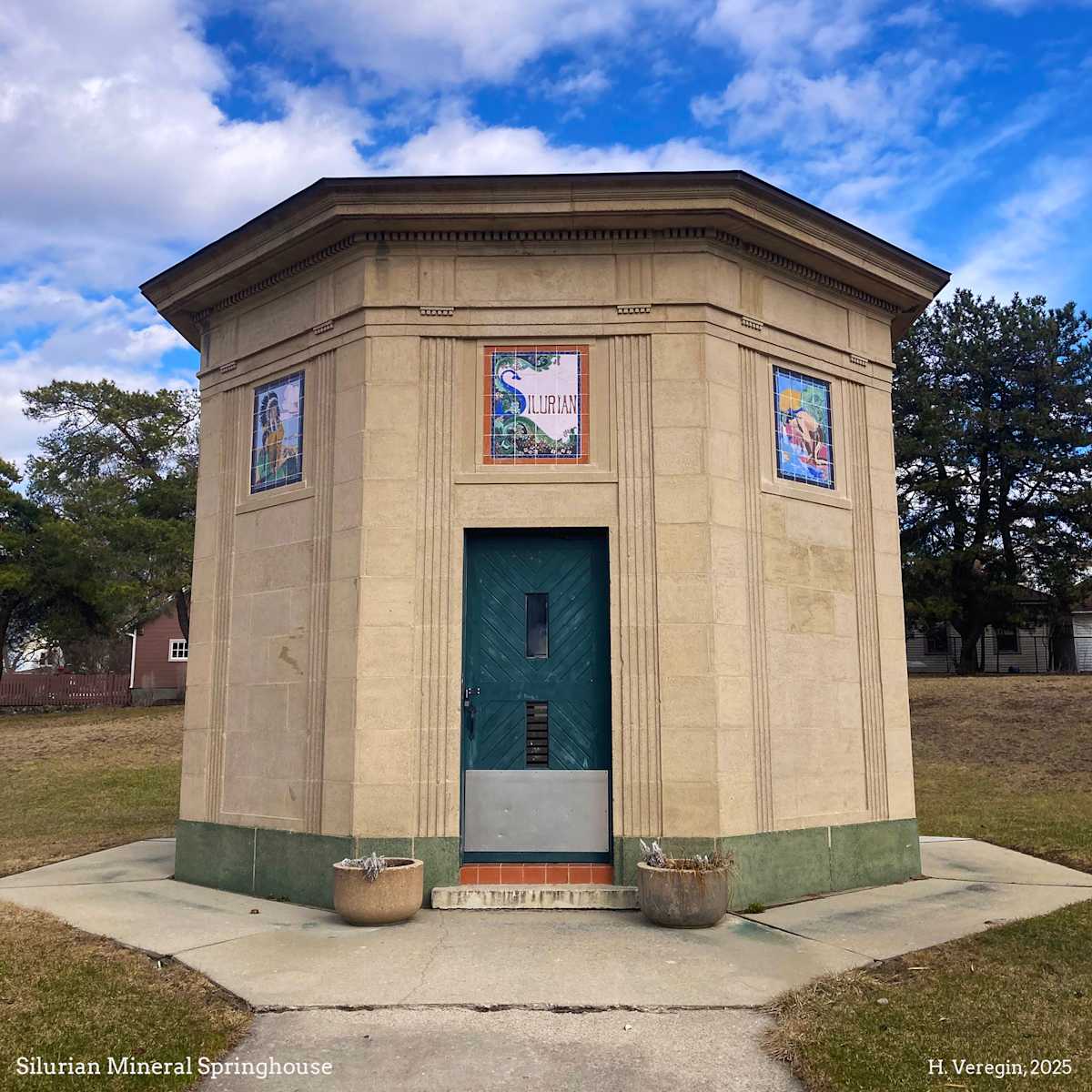Oddsconsin...where we explore peculiar and sometimes mysterious features of Wisconsin’s human landscape.
The human landscape changes so quickly that it can sometimes be hard to imagine what a particular area looked like a hundred or more years ago. In a small, rather nondescript park in Waukesha – Waukesha Springs Park, part of the city park system – an octagonal building is all that remains of a once beautifully landscaped grounds catering to tourists who travelled to Waukesha to consume its healthy spring waters. Silurian Mineral Springhouse was constructed in 1927, at the end of the Waukesha Springs Era, but stands as one of the only reminders of the importance of the springs to Waukesha's history.
The Waukesha Springs Era is a well-known period in the history of the city. It began in the 1860s when springs that had long been used by Native Americans were promoted as a source of health and a cure for diabetes, headaches, chills, indigestion and other ailments. Over the next few decades, numerous bottling plants began operation, and several large spas were built to accommodate the tourists who came from Milwaukee, Chicago and elsewhere. It was an early form of wellness tourism.
Beginning in 1868, Mineral Springs Park was home to the Waukesha Mineral Spring Company. An 1890 map shows the Silurian Spring Mineral Water plant with a bottling room, shipping room, offices and a cooper shop to make barrels. Pipes were used to carry the spring water underground to fill the barrels. Additional attractions included a large pond, an amusement stage and a bath house, where visitors could soak in the spring waters.
By 1895, the facility had expanded to include an octagonal springhouse (at the site of the 1927 springhouse). It was an open, gazebo-like building, with elaborate cresting on the roof and stained glass windows on the cupola.
At that time, the park was much larger than today, extending south to Broadway (also known as Mill St. at the time). To the south of the springhouse was a bandstand in the center of a basin that was once the pond. To the north of the springhouse was the impressive Silurian Casino – built in 1893 – with an auditorium, a 65-foot wide stage with electric footlights, and dressing rooms for performers. Contemporary photographs of the casino show its elaborate decoration typical of the age.
It was during this period that Silurian Springs was at its height. Advertisements noted the curative powers of the water with the phrase, “Lives Saved.” Concerts were held in the park with fireworks, music, food and plenty of Silurian Spring water. In 1885 a roller coaster was apparently constructed on the grounds. Silurian water was distributed across the country via the railroad siding that had been built next to the bottling plant.
Decline came quickly. A 1911 map no longer shows the casino and bandshell, and indicates that the bath house had been converted to storage. New owners evidently chose to focus more on the bottling business than tourism. No long after, the 1880s springhouse was torn down and the present springhouse was erected in 1927 by the new owners of the property. The bottling plant lasted into the 1930s, with products labeled Silver King.
The 1927 springhouse is a one-story concrete octagonal building that has been listed on the National Register of Historic Places since 1984. On each face of octagon is a recessed tile panel depicting Silver King products (Extra Dry Ginger Ale and Fizz) interspersed with scenes of Native Americans drinking from the spring. A panel above the entrance contains the word “Silurian.”
Silurian was not the only spring to suffer from the decline of the Springs Era. Other local springs included Bethesda, Clysmic, Fountain, Arcadian, White Rock, Lithia, and Hygeia, to name a few. A walking tour of some of these springs shows that Silurian fared better than most. Today, many of these sites, once major tourist attractions, are now obliterated by urban development. The fanciful 19th century springhouses have all disappeared. The same goes for the magnificent Fountain Springs House on Grand Avenue, one of Waukesha’s largest Spring Era resorts. Silurian, at least, has its springhouse.
It’s remarkable that in the span of only a hundred years, a beautifully landscaped park with numerous tourist attractions has become unrecognizable. There is nothing wrong with the current Waukesha Springs Park, but there’s also nothing special about it – aside from the 1927 springhouse that suggests something more interesting was once here, something more than a field of Kentucky Bluegrass and a baseball diamond. Change is inevitable, but it is still unsettling to see how quickly and profoundly the human landscape can be transformed.
Change is necessary for history to be history. If nothing changed, there would be no reason to look back in time. The transient nature of material reality has been a major concern of philosophers and religious prophets across millennia. I have nothing profound to add to this discussion, merely the observation that the inevitability of change is sometimes used as an excuse for letting change happen. We often passively accept the decay of historic buildings and landscapes, and the introduction of modern replacements that often fall short of the beauty of their antecedents. While change is inevitable, there is an element of choice involved, whether that is through our actions, or as a result of our lack of action.
Sources: clio, Wisconsin Historical Society
